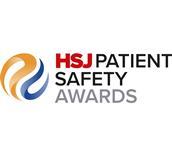A review of the NHS continuing healthcare procedures inspired a trust and CCG to come up with new ways to speed up the transfers of care. Nicola Steggles explains how it was achieved

Staff at James Paget University Hospitals Foundation Trust and Great Yarmouth and Waveney Clinical Commissioning Group have streamlined the procedure for considering inpatients for NHS continuing healthcare (CHC), resulting in a drastic reduction in the time it takes to discharge them.
‘Streamlining inpatient procedures drastically reduced discharge times’
A review of the CHC assessment process revealed that full integration of the three components of patient flow across the system would speed up transfers of care.
Prior to this scrutiny, the general perception was that social services were the greatest cause of delays to patient discharges. However, professionals involved in discharging considered the main problem lay in the management of the CHC assessment process.
- Sign up here to get Hospital Transformation resources by email
- Hospital Transformation Home
- Join the debate using hashtag #HSJHospitals
CHC eligibility
It is necessary to establish if a patient requires ongoing care provision funded by the NHS. The process for this is defined in the national framework for NHS continuing healthcare.
Considering a patient for CHC eligibility is identified as part of the discharge planning for a patient.
‘Health and social care colleagues need to work constructively and collaboratively’
The CHC process can only be instigated once a patient has been deemed medically fit to leave hospital; the patients potential for rehabilitation or need for other NHS services have to be ruled out prior to CHC assessment.
The framework recommends that consideration for CHC should not take place in the acute hospital environment. However, this is difficult to achieve, particularly for those patients who require a change of residence when discharged.
To achieve a timely discharge and ensure patients admitted to an acute hospital spend no longer than is medically necessary as an inpatient, this requires health and social care colleagues to work constructively and collaboratively.
Decision support tool
Considering a patient for CHC commences with the completion of a checklist which, if met, is succeeded by the completion of the decision support tool by the multidisciplinary team members. A recommendation regarding eligibility to receive ongoing health funding to meet health and social care needs is then made.
The service provision for CHC was divided between the acute hospital patient flow team (acute nurse) and the CCG CHC nurses (CCG nurse). Managing CHC in this manner resulted in:
- a lack of continuity for patients and staff;
- delays between the checklist and the completion of the tool;
- a lack of ownership; and
- an increasing blame culture as a result of CHC delays.
After scrutiny of the delayed transfers of care process and establishment of a dialogue about CHC, change became a real possibility.
The authors realised there was mutual respect with a shared responsibility, to investigate and deliver change.
‘After scrutinising delayed transfers of care process, change became a real possibility’
The willingness to engage was palpable and this was disseminated to the key players who would deliver the new pathway together. The respective teams had felt the pressure of the delayed transfers of care associated CHC delays and wanted to reduce this.
The key steps to maximise the buy-in of the group to deliver the new pathway were to:
- bring the two nursing teams with line management responsibilities remaining with the team members’ respective organisations, and social services together to describe the new way of working;
- arrange a team day for the group to share ideas and experiences while formally delivering CHC training revision; and
- have regular group meetings to focus on team building and consistent delivery.
The CCG and social services agreed to keep delays to a minimum post-decision support tool completion.
The placement of eligible CHC patients could continue to take place on a “placement without prejudice” basis. This means the patient does not have to wait on an eligibility decision from the CCG before they can leave the hospital.
The actions for the new CHC practice were:
- the same nurses would be able to complete both the checklist and the tool which resulted from positive checklists;
- the patient’s allocated social worker would join the nurse doing the checklist with the aim to further promote good working relationships between health and social care staff, reducing the risk of disputes regarding patients being screened out of the process;
- a whole step in the existing pathway would be removed because at checklist stage the nurse would use this tool as the basis for the assessment, thus removing the need for a further nurse assessment prior to completing the tool; and
- a further positive outcome was that if a patient did not require full consideration for CHC, the social worker could immediately work with the patient and their representative on discharge planning, already having an awareness of the patient’s ongoing needs.
The benefits
The new practice is embedded into the daily routine in delivering CHC to our patients, with a focused outcome of process continuity with no deterioration of decision making at assessment or recommendation, ownership of the process and improving the patient experience, as well as reducing delays.
As a system we have significantly reduced the average number of days taken to complete the assessment of patients for CHC from 17.6 to 4.2.
‘We have reduced average number of days from 17.6 to 4.2’
The overwhelming achievement in reviewing the CHC process has been successful in terms of reducing the bed days between checklist and tool by 72.6 per cent, reflected as a saving of £2,680 per patient.
The impact on the trust has been in supporting the achievement of 95 per cent emergency department four hour performance target and maintaining the elective programme.
Nationally, colleagues working in this area have expressed an interest in developing new ways of working in managing CHC process in the acute setting. The approach taken by the acute hospital and CCG colleagues, supported by social services is truly embracing an integrated approach to managing patients, demonstrating reduction in delays and improving relationships between organisations.
Next steps
To ensure timely and appropriate consideration of when a patient should be assessed for CHC, the understanding of CHC needs to be improved among staff, including engaging those based on wards. To do this build it into the ward nurses’ daily care plan review.
It is anticipated the outcome will be a reduction to the present bottleneck of delays and the wait for a checklist to take place.
The CCG plans to streamline this approach to the placement of the patients receiving health funding by again reducing the hand overs between professionals in their own organisation.
Nicola Steggles was patient flow manager at James Paget University Hospitals Foundation Trust; Dawn Newman is head of quality in care at Great Yarmouth and Waveney CCG
























1 Readers' comment